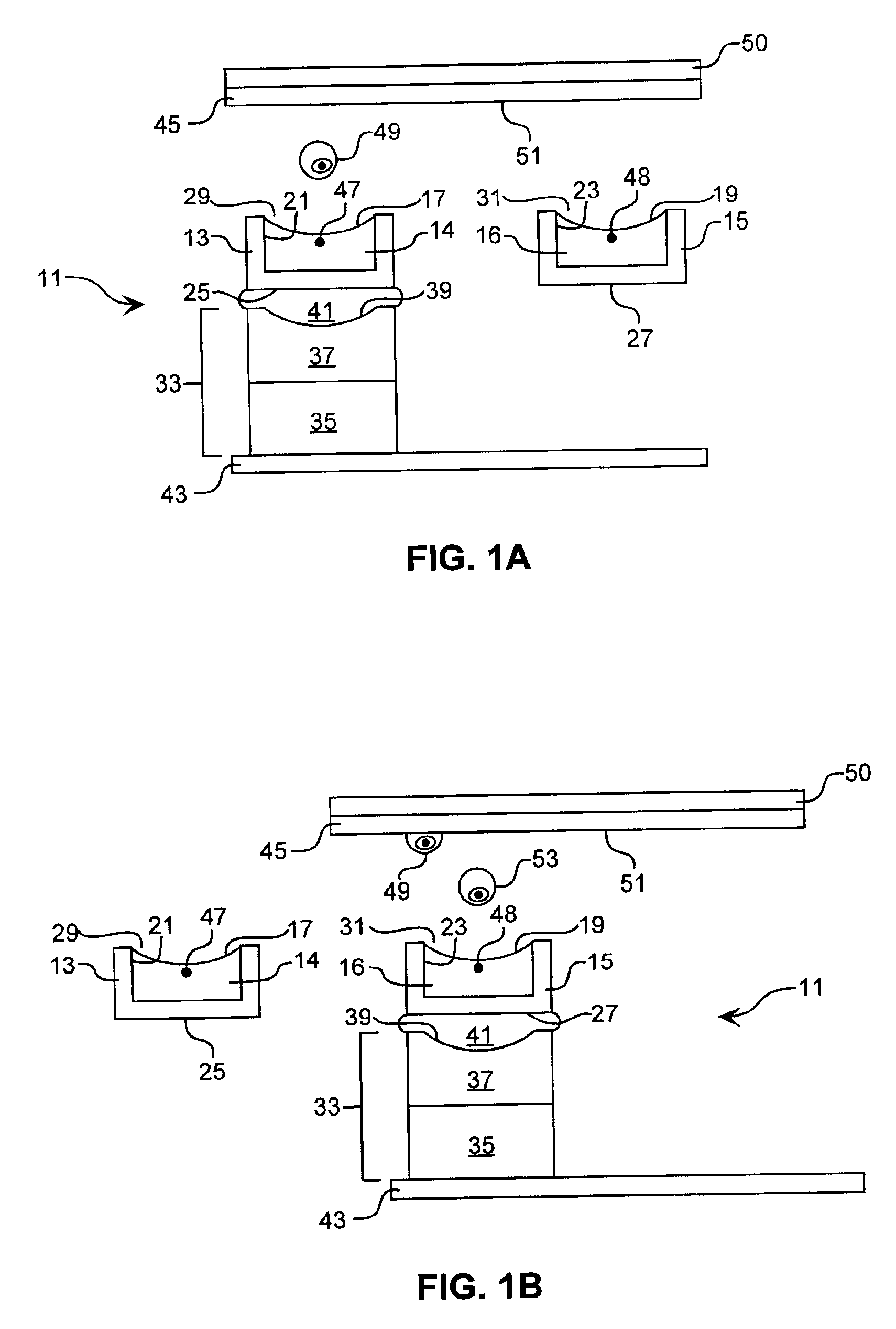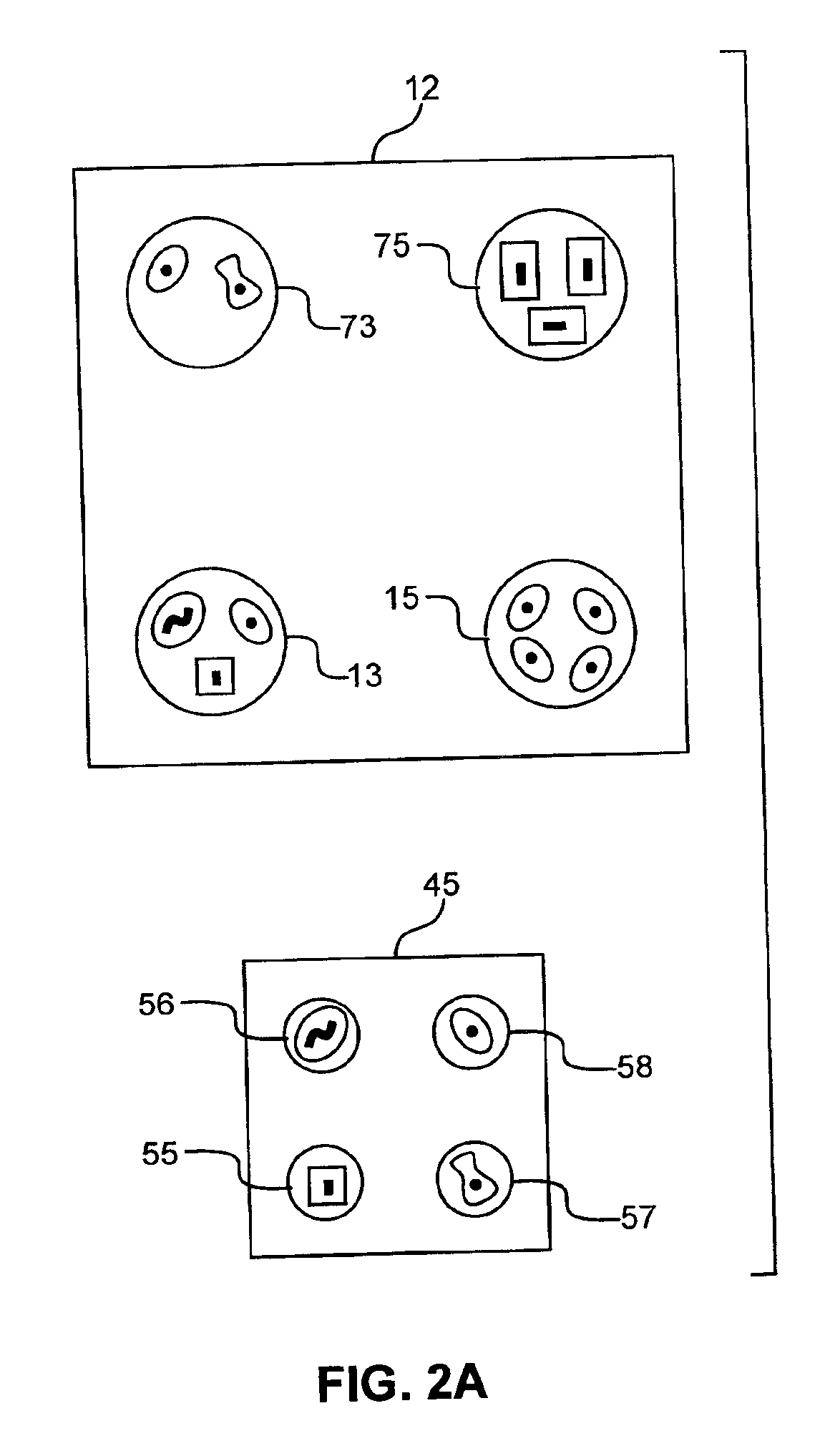Focused acoustics for detection and sorting of fluid volumes
a focused acoustic and fluid volume technology, applied in the field of focused acoustic energy, can solve the problems of affecting the efficiency of filtration and centrifugation, so as to achieve the effect of forming an array of single living cells more efficiently, rapidly, flexibly and economically
- Summary
- Abstract
- Description
- Claims
- Application Information
AI Technical Summary
Benefits of technology
Problems solved by technology
Method used
Image
Examples
example 1
Acoustic Ejection of Monocytes onto a Substrate as an Array from a Mixture of Cells from Peripheral Blood with Concurrent Separation of Red Blood Cells, Granulocytes, and Lymphocytes into Channels
Rabbit polyclonal-Ab against human MHC (displayed on all cells) is generated and a single clone is selected that binds an MHC epitope common to all humans rather than to the epitopes specific to individuals. A substrate is functionalized with the monoclonal antibody (mAb) by routine methods. Monocrystalline Si is chosen as the substrate because of the plethora of known methods for functionalizing Si.
A channel having a width of 25 μm, as illustrated in FIG. 6, is utilized to reduce the time spent searching for cells to eject. This central ejection channel component of the sorting unit is about 6 cm in length, open on top between about 2.75 and 3.25 cm and at one end for about 0.5 cm. The blood cells are supplied from fluidically connected channels, not shown. Two detectors, D1 and D2, are de...
example 2
Bronchoalveolar Lavage Human Airway Epithelium (HAE) Cell Array for Studying Inflammatory Response with Simultaneous Cell Counting
The method of the preceding example is adapted to arraying HAE cells obtained from bronchoalveolar lavage with simultaneous sorting and differential cell counting. In addition to epithelial cells, bronchoalveolar lavage fluid routinely contains other cells. Cells found in lavage fluid include the agranulocytic leukocytes, lymphocytes, and monocytes, which are typically activated as macrophages, and granulocytic leukocytes, neutrophils (PMNs), eosinophils, and basophils. Often present are pathogens such as viruses, including influenza viruses and DNA viruses, including herpesvirus family members, most notably CMV (cytomegalovirus) and KSV (Kaposi sarcoma associated herpesvirus); fungal species, including Cryptococcus albidus, Coccidioides immitis, and Aspergillus flavus; eukaryotic opportunistic pathogens such as Pneumocystis carinii, which is found in hea...
example 3
HAE Cell Array for Studying Individual Susceptibility to Mutagenesis as a Proxy for Carcinogenesis
The method of the preceding example is adapted to permit exposing the arrayed HAE cells to chemical and other mutagens, such as heat and radiation. Genetic damage is measured at different times after the exposure is discontinued by routine methods, for example biochemical assaying of broken crosslinks and other damage to DNA. Differences in DNA repair enzyme genetics may be studied by comparing recovery (extent of reduction of damage) at various times after exposure. The well plate arrays remain useful as controls, and cells may be cultured in the well plates, or array cells may be removed and cultured, to determine the appearance of dysplastic or neoplastic cells in subsequent cell generations after the exposure, and the extent of any dedifferentiation in any dysplastic or neoplastic cells detected.
PUM
| Property | Measurement | Unit |
|---|---|---|
| frequency | aaaaa | aaaaa |
| diameters | aaaaa | aaaaa |
| diameters | aaaaa | aaaaa |
Abstract
Description
Claims
Application Information
 Login to View More
Login to View More - R&D
- Intellectual Property
- Life Sciences
- Materials
- Tech Scout
- Unparalleled Data Quality
- Higher Quality Content
- 60% Fewer Hallucinations
Browse by: Latest US Patents, China's latest patents, Technical Efficacy Thesaurus, Application Domain, Technology Topic, Popular Technical Reports.
© 2025 PatSnap. All rights reserved.Legal|Privacy policy|Modern Slavery Act Transparency Statement|Sitemap|About US| Contact US: help@patsnap.com



